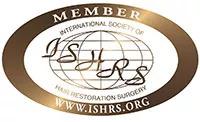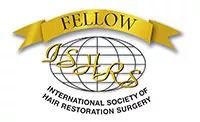
Don't hesitate to complete a free online diagnostic!
1. Beard transplant results
When the grafts come from the beard itself, the result is usually breathtaking. The grafted hairs are indistinguishable from the original hairs.
When the grafts come from hair, only an expert eye can detect a small difference.


2. Indications for beard transplantation
Patients usually present with an irregular, incomplete beard, with holes or gaps. Sometimes, patients are even virtually beardless.
They can also be patients with surgical scars (cleft lip and palate repair, or secondary to a facelift, or following a road accident). They can also be burn scars, radiotherapy scars or facial acne scars.
Finally, and this is becoming more and more frequent, it may be a correction of a poorly performed beard transplant.
3. Technical details of beard transplantation
 For beard transplantation, the most commonly used hair is beard hair. In fact, the best results are obtained by moving the hair follicle from one place to another (for example, from the chin area to the jugal or moustache area). If, however, these hairs cannot be used, the hairs used are hair, because they most closely resemble the original beard hairs (a combination of the two can also be envisaged). Indeed, it's hard to find body hair as thick as beard and moustache hair. Beard and moustache hairs also have an important characteristic: they always grow in isolation, which means that the hair follicle contains only one hair. Hair, on the other hand, grows in small groups of 2 or 3 hairs in over 95% of cases.
For beard transplantation, the most commonly used hair is beard hair. In fact, the best results are obtained by moving the hair follicle from one place to another (for example, from the chin area to the jugal or moustache area). If, however, these hairs cannot be used, the hairs used are hair, because they most closely resemble the original beard hairs (a combination of the two can also be envisaged). Indeed, it's hard to find body hair as thick as beard and moustache hair. Beard and moustache hairs also have an important characteristic: they always grow in isolation, which means that the hair follicle contains only one hair. Hair, on the other hand, grows in small groups of 2 or 3 hairs in over 95% of cases.
For this type of transplant, it is therefore imperative to implant only one or two hairs at a time, and to make very tangential incisions.
We perform a procedure called FUE, which involves follicular extraction using a hybrid punch to optimize the quality of the grafts. All the grafts are then analyzed under the microscope and subdivided into two or three parts if necessary. The grafts are then implanted into extremely fine slits of 0.7 to 0.8 mm.
In the case of harvesting from the beard, there is no visible scar in the donor area. However, if the harvest is done from the hair, the result is a small traditional (FUE) scar of <1mm that is barely visible, especially after a full shave.
If hair is used, we perform a procedure called FUE, which involves follicular extraction using a hybrid punch to optimize the quality of the grafts. The grafts are then analyzed under the microscope and subdivided into two or three parts, as required. The grafts are then implanted into extremely fine 0.7 to 0.8mm slits. Scarring in the donor area is minimal. The scar in the recipient area is invisible.
We use cannulas that pass under the skin, providing a local anesthetic that's quick, easy and very painless. Pain-reducing oral medication can also be used.
Beard transplants cost from 4 to 5 euros per transplant. It takes between 1,000 and 2,000 grafts per beard transplant.
If you wish, you can contact the HTS Clinic medical team or complete an online diagnosis.
4. The special case of unsuccessful beard transplant corrections
Over the last ten years, as the quality of hair and beard transplants around the world has risen, the so-called black market has emerged.
A market orchestrated by numerous intermediaries, most often financiers with no medical qualifications. Their aim is to attract as many people as possible in order to make their low-cost transplants profitable.
A bad beard transplant is truly catastrophic and can have terrible psychological repercussions. I've had patients in this situation who were simply contemplating suicide. The defects of the graft are usually so visible that the people around them, and the patient, can't see anything else!
Thanks to the WAW Tornado punch I've developed, it's now possible to remove bad grafts. These grafts are most often too rich in hair, the direction is often wrong (too perpendicular to the skin), and they are often placed too superficially, giving a "cobelstone" appearance, i.e. a small bump of skin at the base of the hair.
These extracted grafts are then processed under a microscope, often subdivided, and placed back into the hole created, at the right depth and with the right orientation.
In most cases, the first operation corrects 90% of the problem. In fact, some hairs may not be present on the day of correction (they have fallen out and not yet grown back). It is often useful to schedule one or two touch-up sessions.
The results are almost always magnificent. There may, however, be some scarring, or bad, stubborn grafts. So it's best not to embark lightly on a beard transplant performed by a non-specialist.
It's a painstaking, time-consuming job, but one we love to do at the HTS Clinic. Patients are often extremely grateful to us for getting them out of this mess. We regularly spend a full working day on correction.





